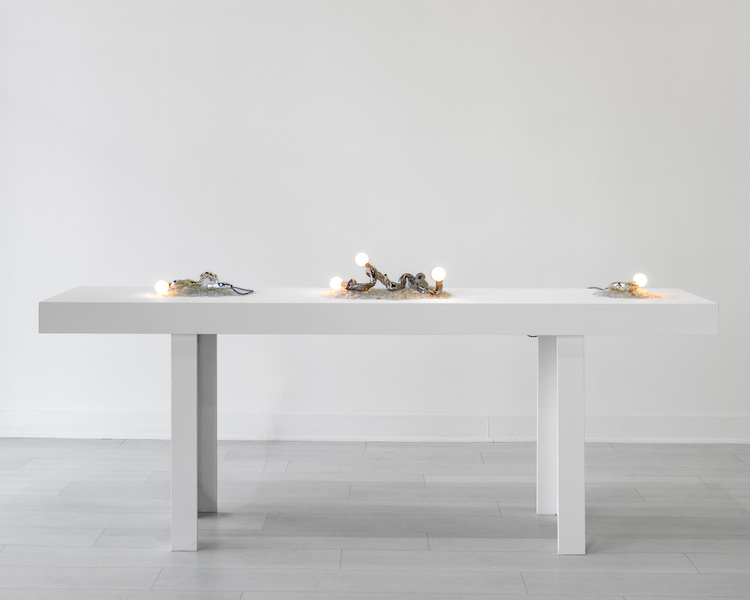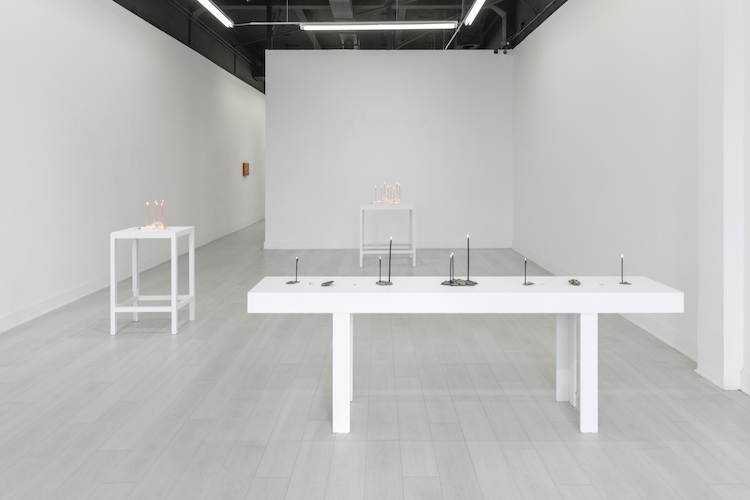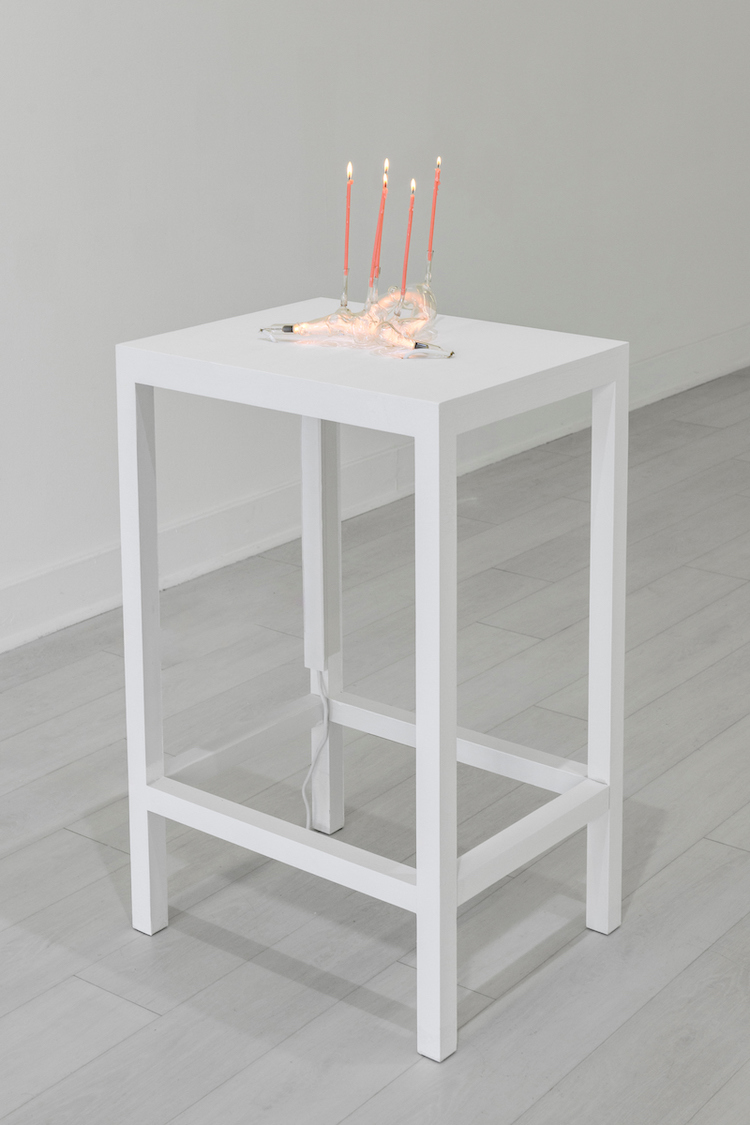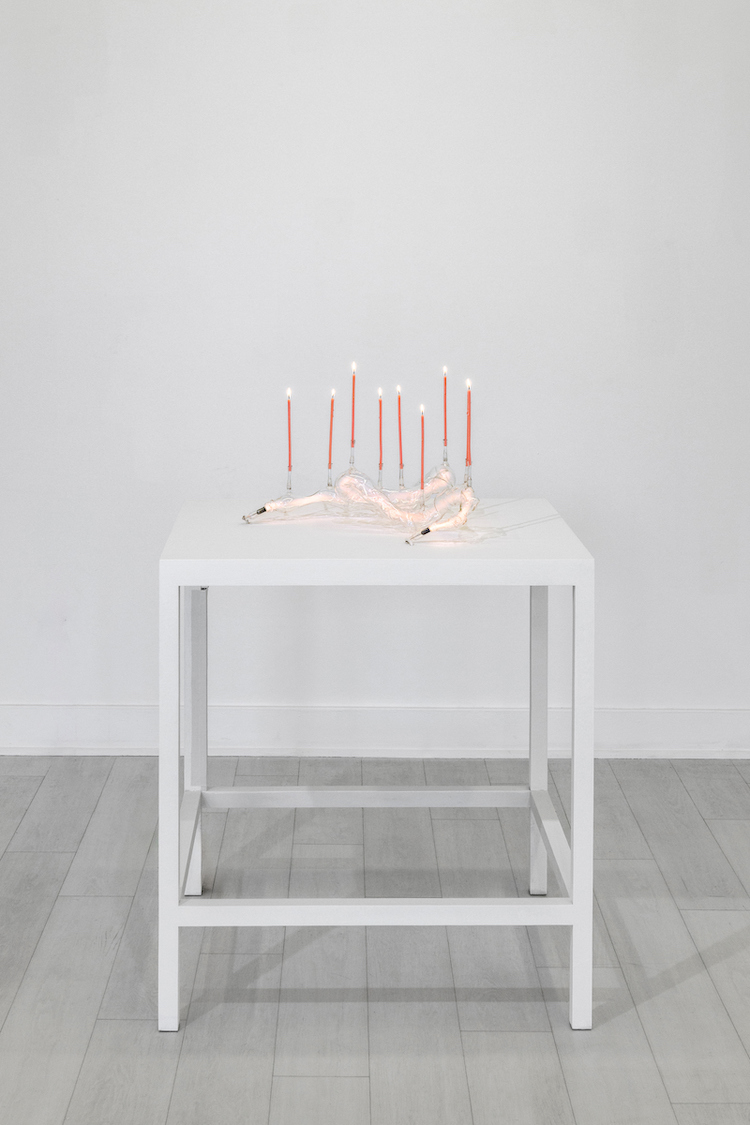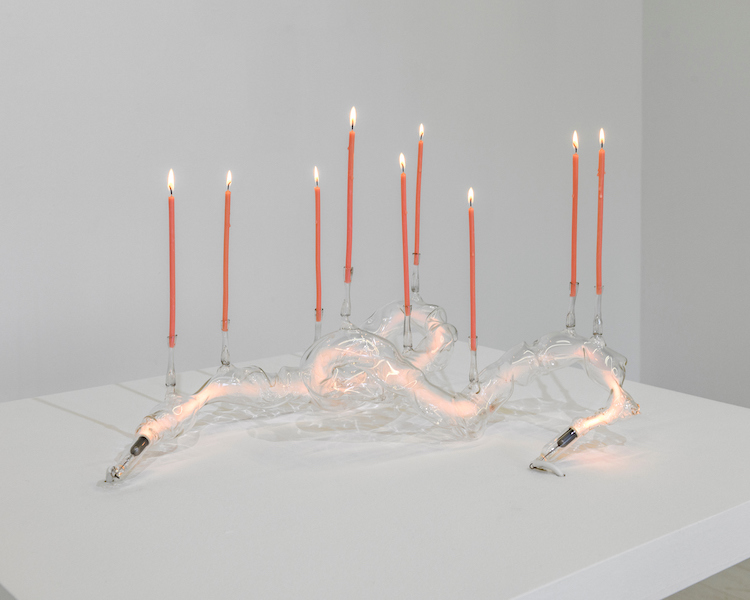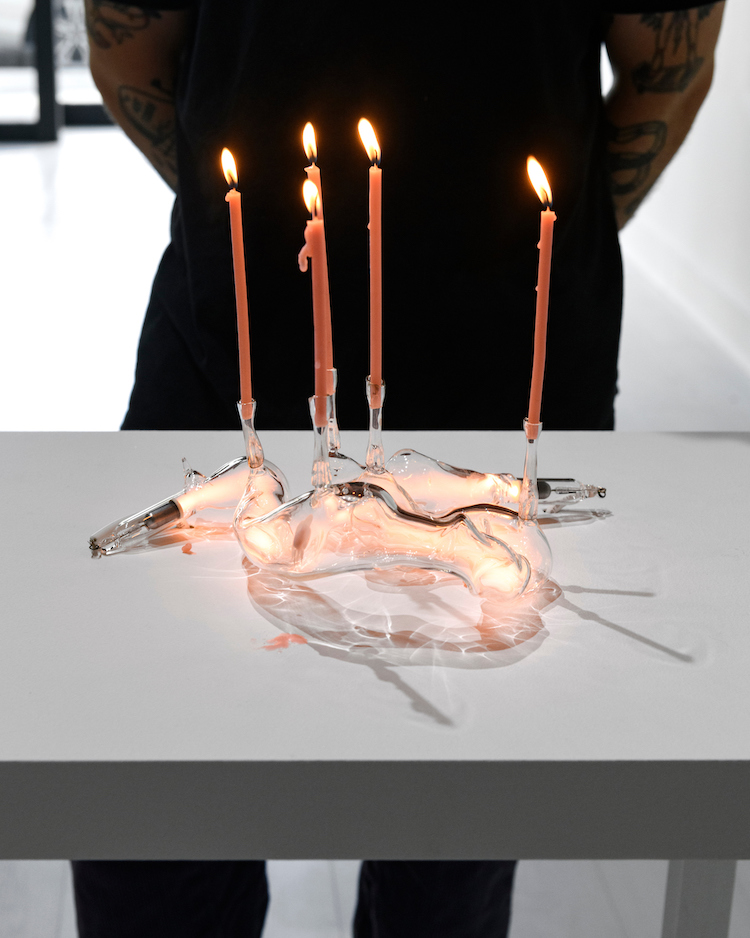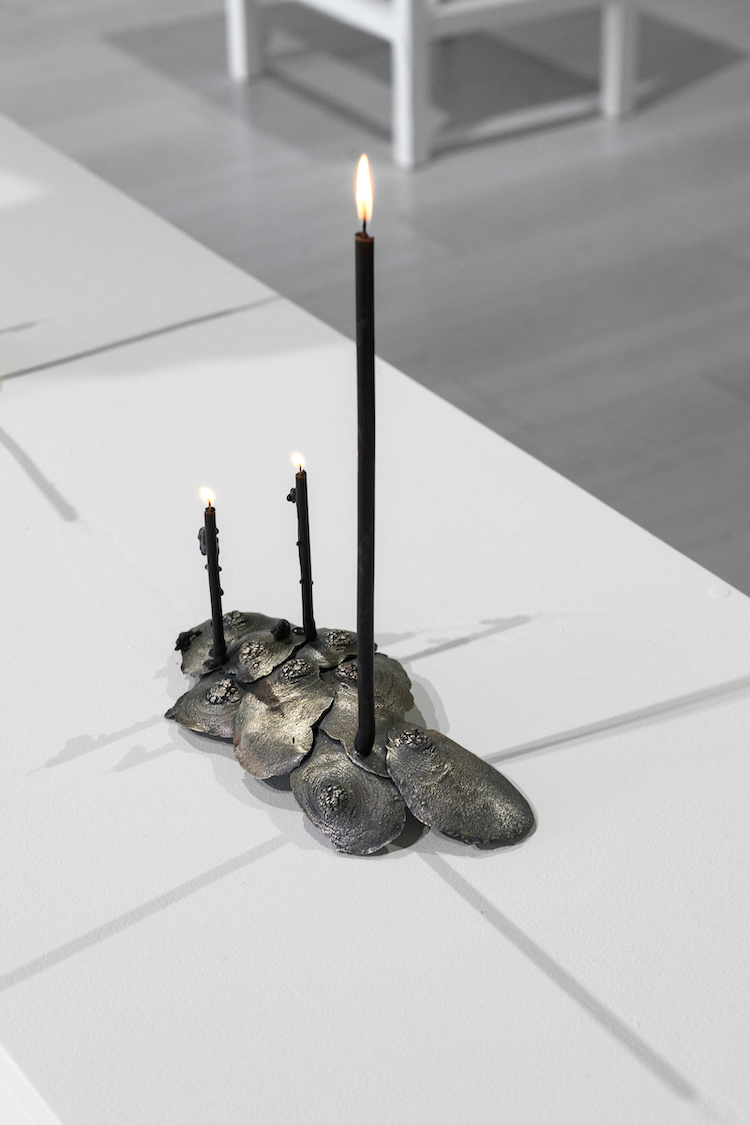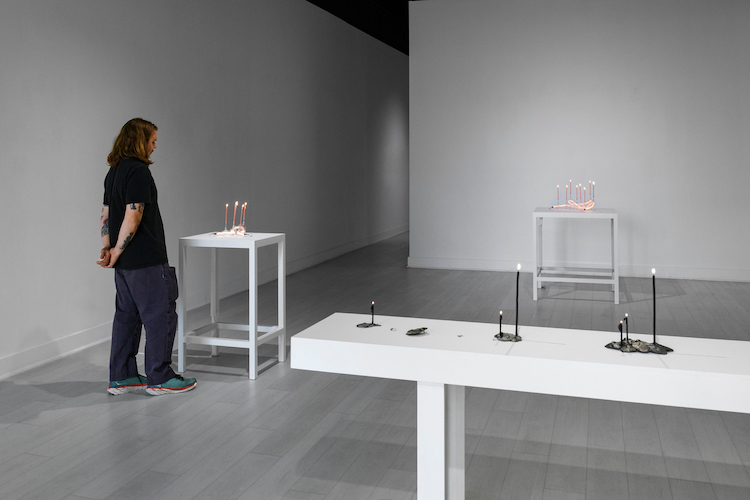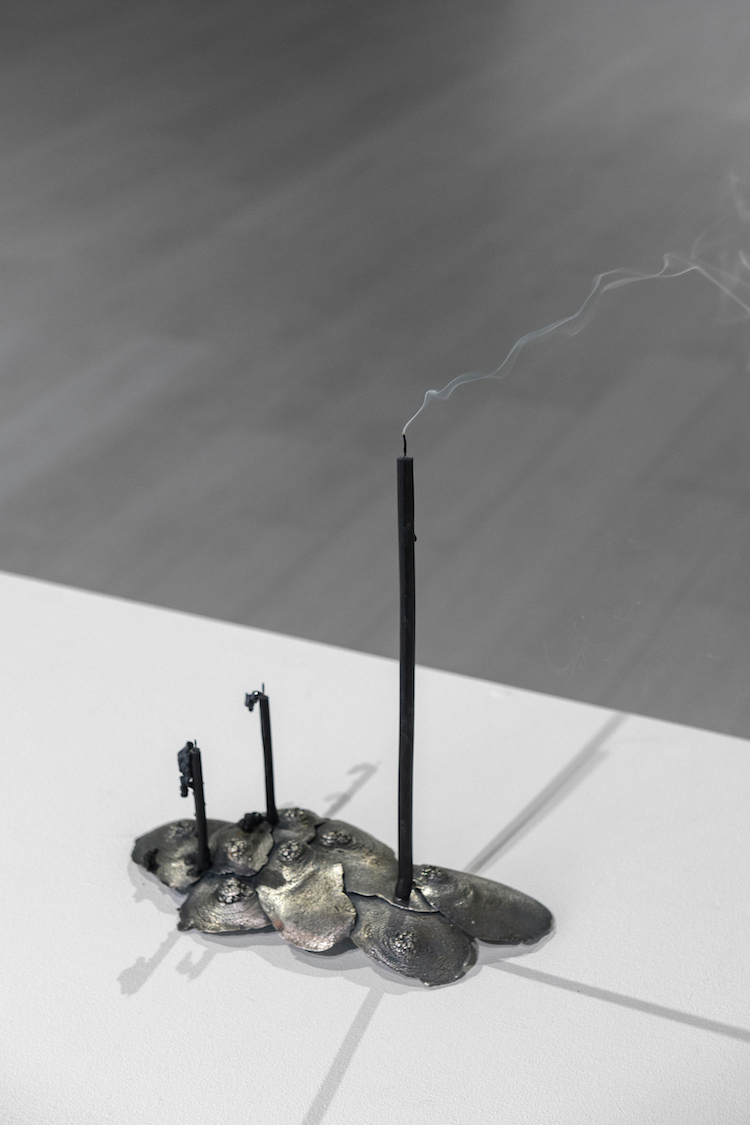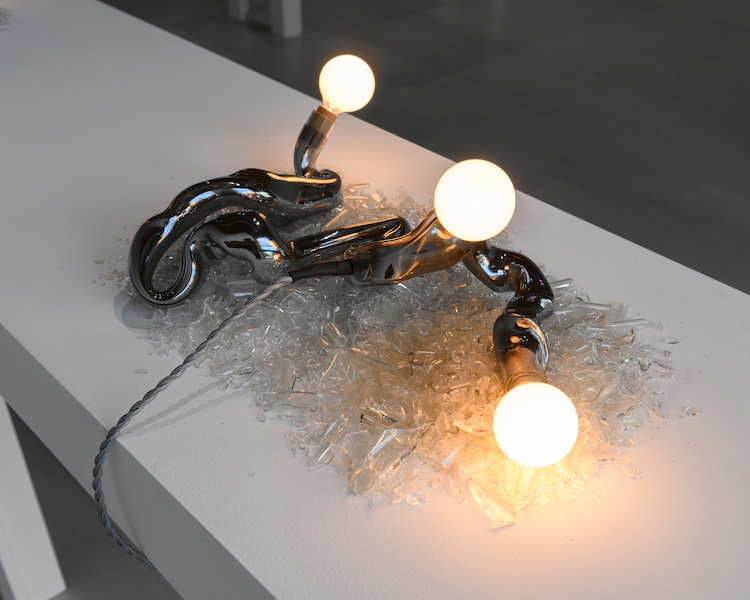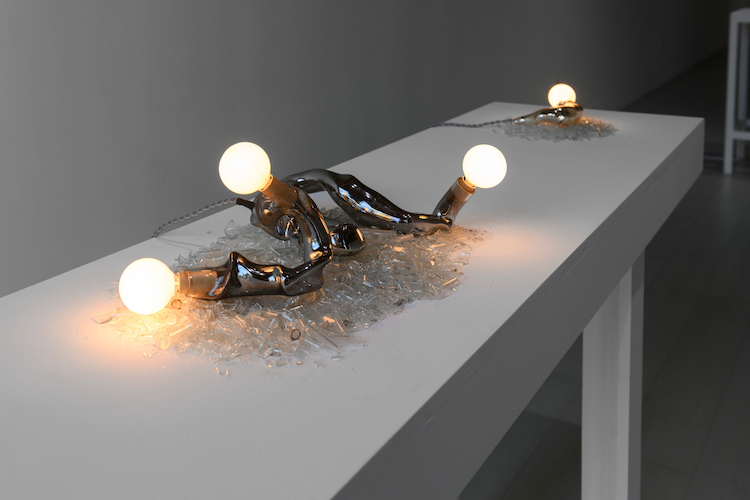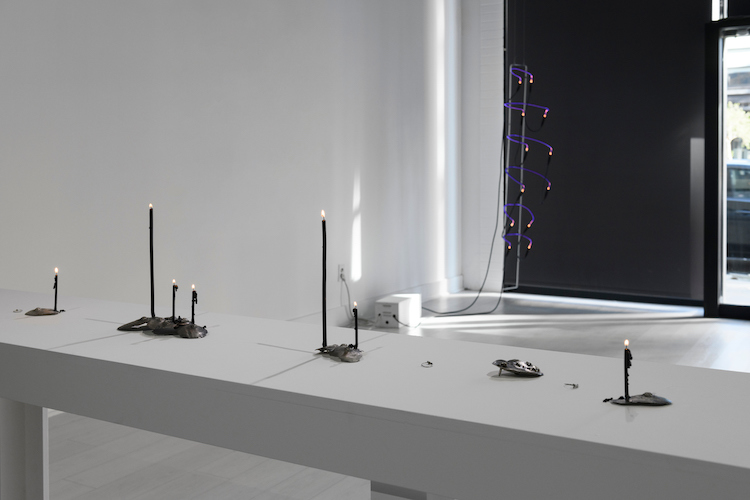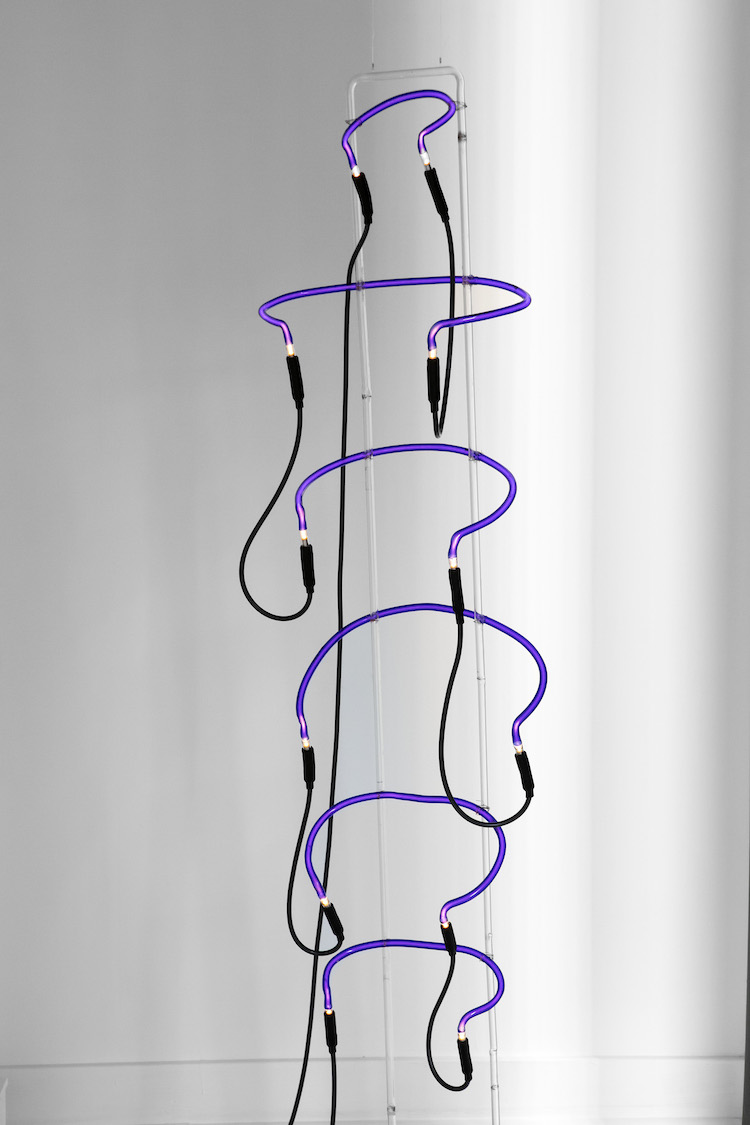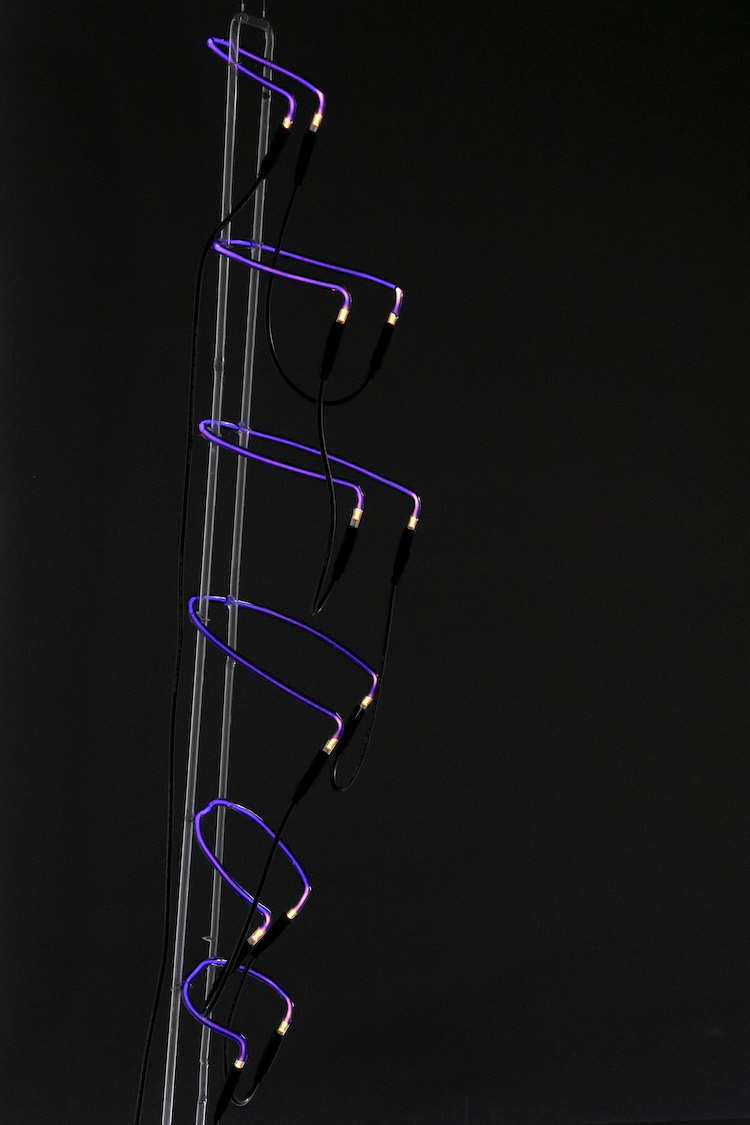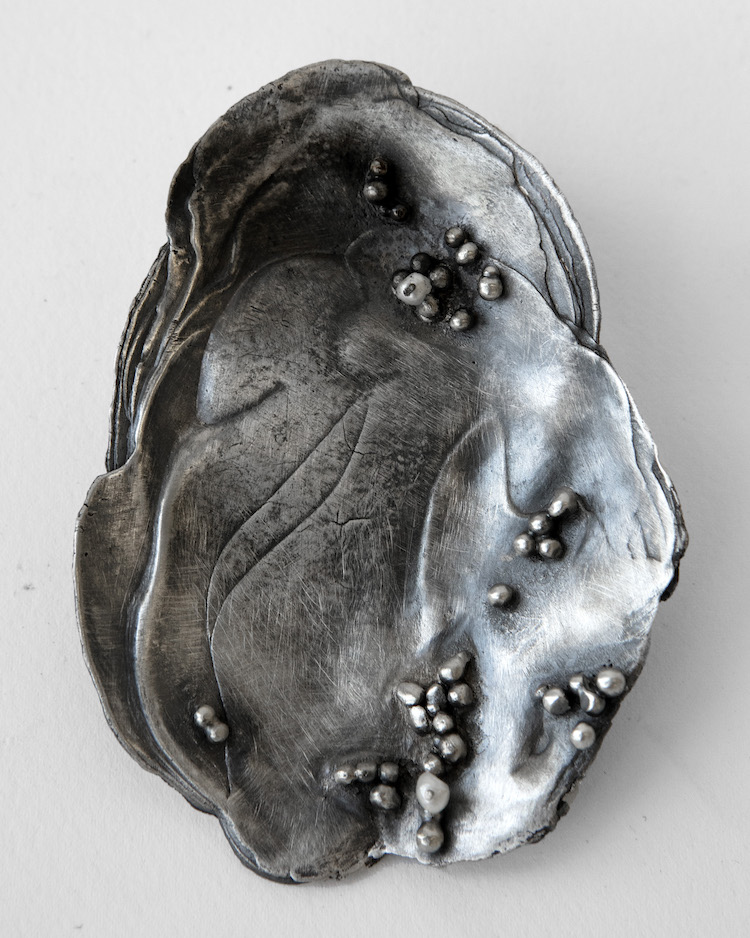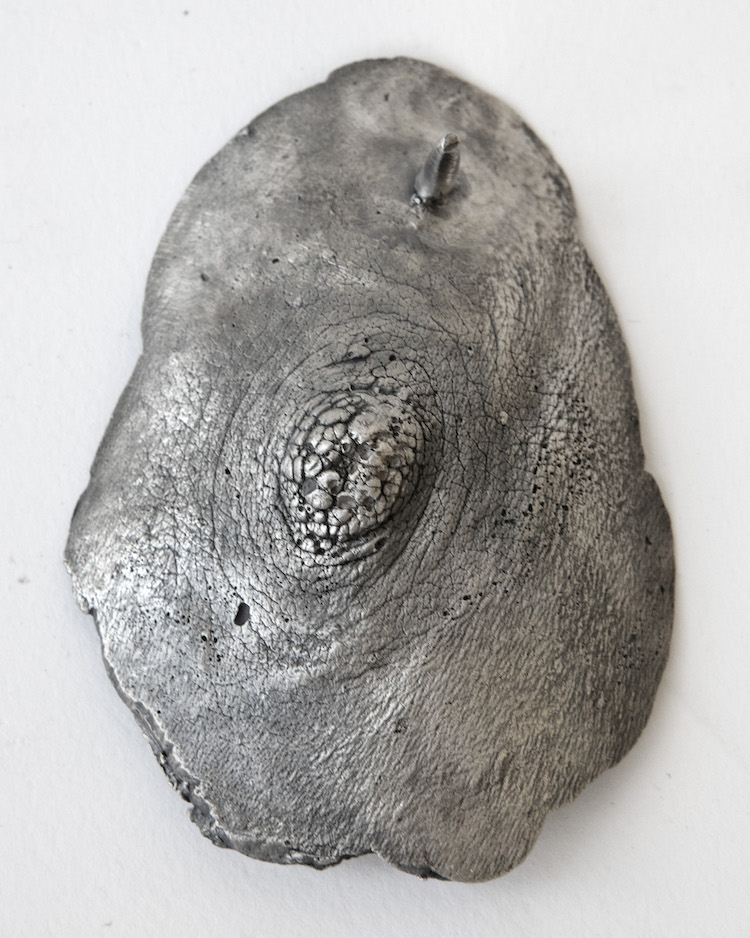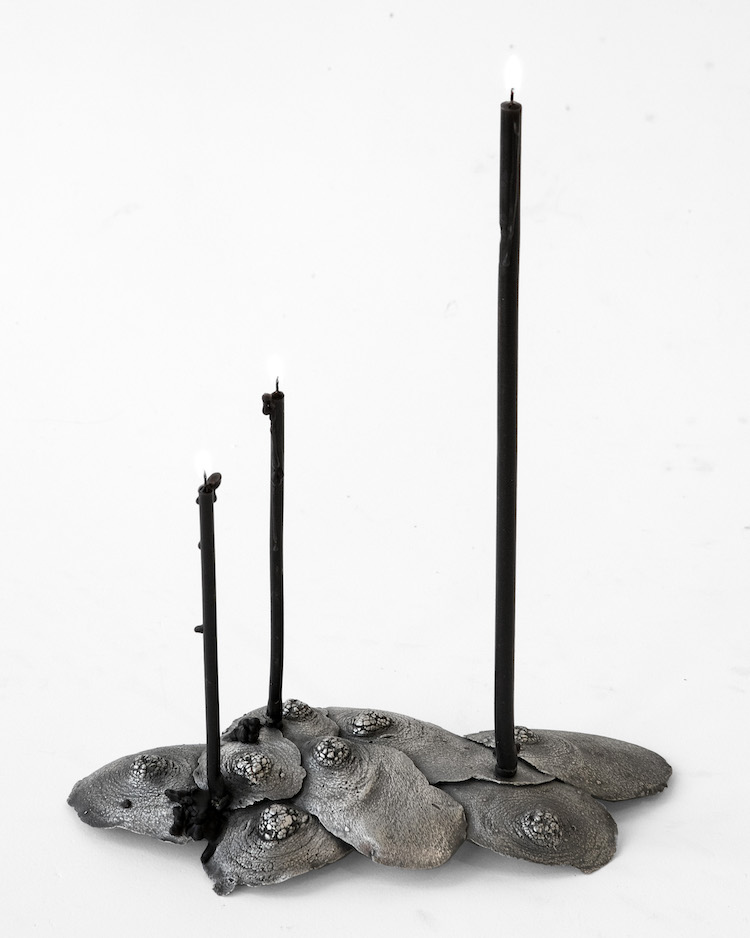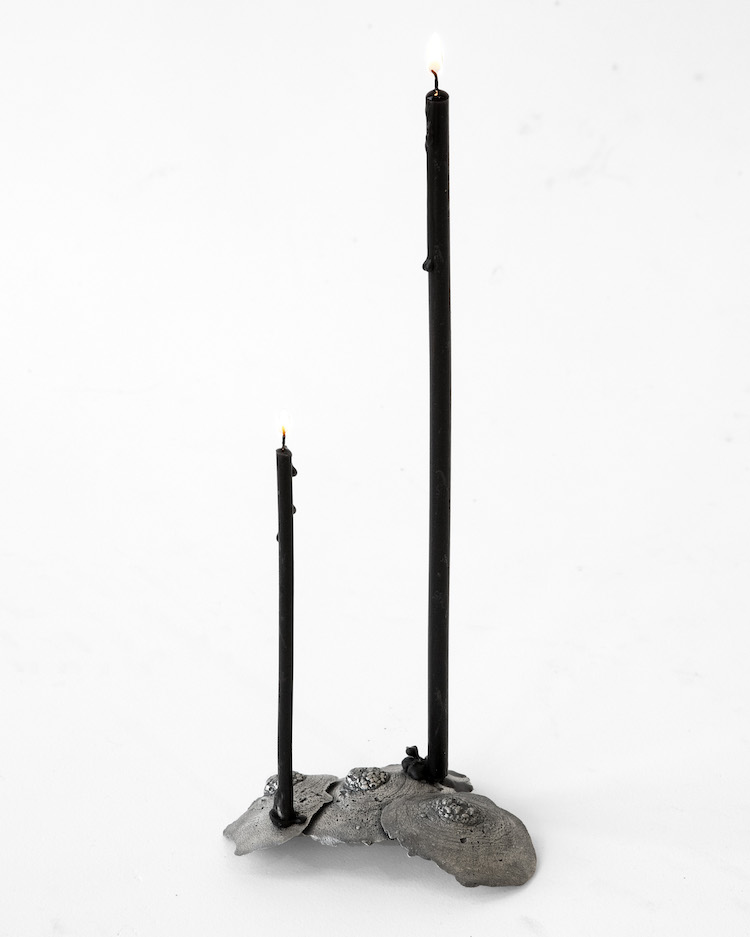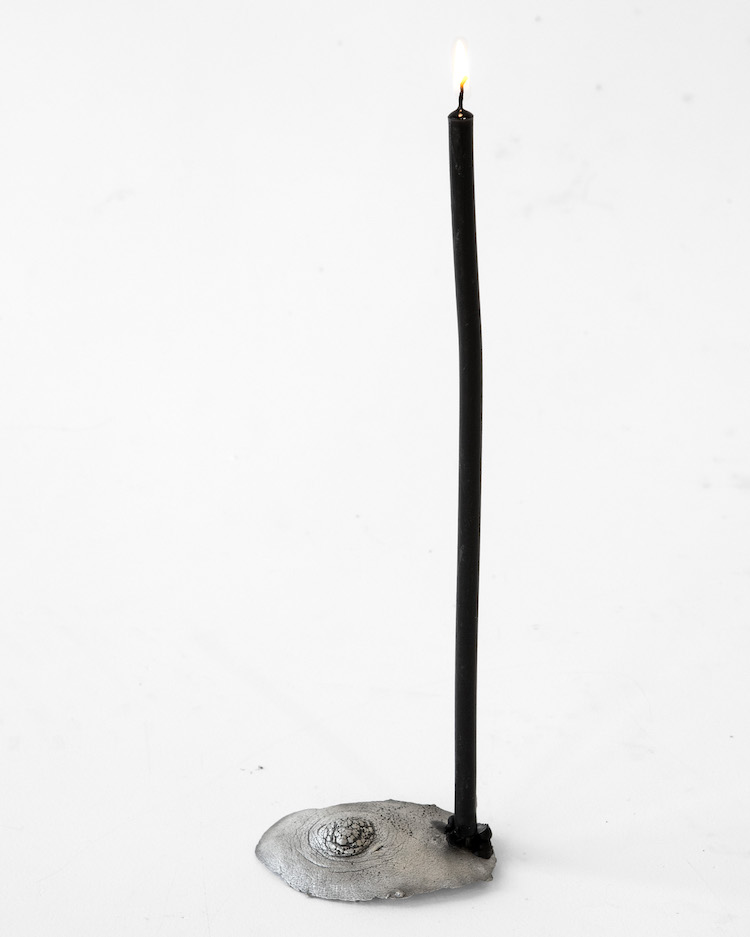A Common Burn marks Meryl Pataky's third solo exhibition at pt.2 gallery, where she continues her exploration of our relationship with nature, her personal journey through motherhood, and her boundary-pushing endeavors with glass as a medium. Pataky describes this show as "a dedication to the obliterating and rejuvenating journey of motherhood." It features silver pieces cast from molds the artist made of herself during pregnancy and a new series of candelabra sculptures. This exhibition celebrates the seemingly impossible feats of our bodies through both physical and emotional labor, delving into the complex nature of motherhood.
Central to this exhibition and Pataky's creative process is the concept of "slow percolation," which she employs to counter societal pressures in the art world and parenthood. Pataky has granted herself the time for learning, experimentation, and labor-intensive effort. While her practice is rooted in neon works, she continually expands her sculptural repertoire, challenging our expectations of what illuminated glass can achieve. Pataky refuses to be confined by boundaries or limitations and bravely confronts the dark, difficult, and intricate aspects of life. The outcome is a practice that is raw, intricate, and challenging, yet ultimately yields something genuinely magical.
This show includes the second iteration of her candelabras, vessels that house two light sources: the ephemeral burning candles, releasing energy, and the consistent glow of the gas captured within the glass. For this project, Pataky employs borosilicate glass, a material with commercial and scientific applications such as Pyrex and beakers. The thermal properties of borosilicate glass allows her to experiment with varied textures, shapes, scales and complexities with the tubes, resulting in glass that undulates and coils, resembling tentacles and tunnels. These forms possess a slightly corporeal and unsettling quality, holding an ethereal glow that flickers and vibrates with energy. In the case of the silver pieces, Pataky achieves their reflective quality by employing a silver nitrate solution to induce a reduction—a chemical reaction that occurs when oxygen is removed. The production of these mirrored works serves as a further meditation on motherhood and mental health. Deeply rooted in science and research, these descriptions only scratch the surface of the processes behind A Common Burn.
This body of work draws strong parallels to Louise Bourgeois' spiders, which served as maternal metaphors, representing both vulnerability and power. Similarly, Pataky explores the complexities and contradictions of motherhood through her art practice and the natural world. For her, the fitting metaphor is the pearl, particularly mother of pearl, or nacre—an iridescent substance that forms on the inner layer of shells. Nacre is renowned as the strongest material found in nature, composed of tile-like structures that interlock under pressure, resisting stress and strain. This material holds profound significance for Pataky as a new mother. She explains, "A pearl is something we are working on, a struggle or transformative period maybe. It's the experience of the world we want to give our children—a smoothed-over hardship, a lustrous veneer. It's not the reality of what their lives will be, but as mothers, we still try." The creation of a pearl mirrors her journey, forming from materials within the oyster itself, refined with meticulous care, and shielded by its resilient exterior. The pearl and the oyster symbolize the many contradictions and complexities inherent in the realm of motherhood: strength and vulnerability, expansion and contraction, disposability and preciousness, ugliness and beauty.
The pearl symbolizes time, which immediately resonated with Pataky in her contemplation of "slow percolation." She shares, "As soon as the pearl came to me as a concept for the work, I imagined the sound and sensation of being underneath the chaos of the waves. Silently working on my pearls, I immediately started crying. I felt held by the idea." Parenthood brings heightened awareness of the passage of time, with fleeting moments juxtaposed against societal pressures for rapid productivity. Embracing slowness and taking the time to create is radical for an artist, particularly a new mom who grapples with the fear, guilt, and speculation that her practice may never be the same. Pataky underscores the value of her slow percolation, demonstrating that it can be a gift benefiting her art, her family, and her own well-being. A Common Burn releases the energy that has been building within Pataky over nearly two years, from pregnancy through birth, and illuminates the intricate complexities of human existence. —Christine Koppes

